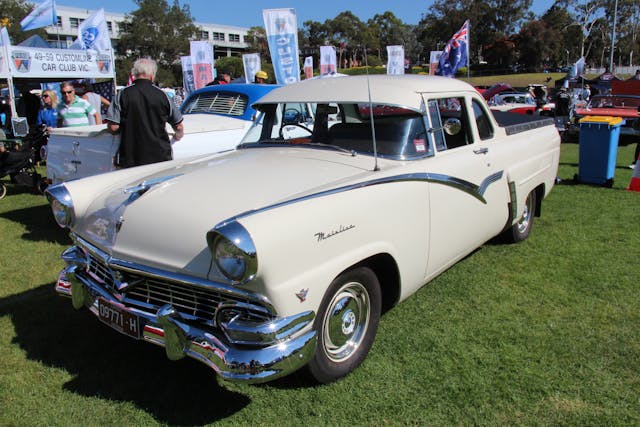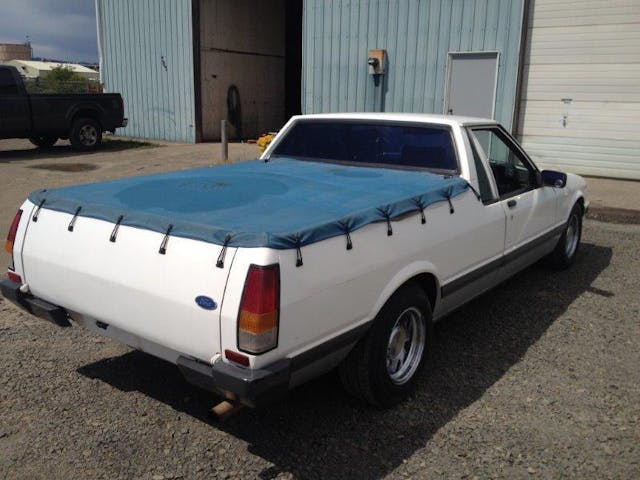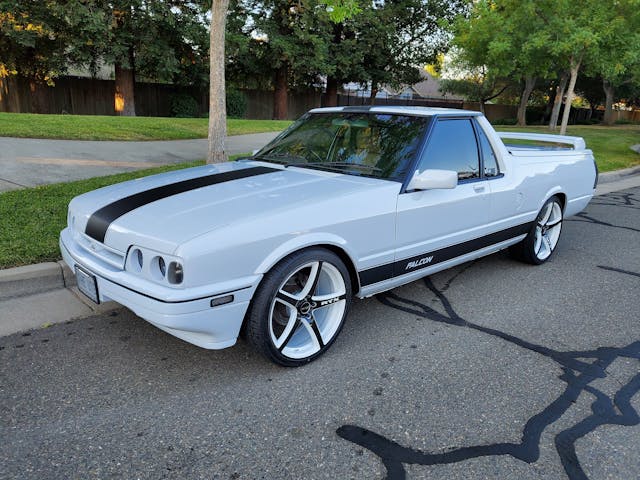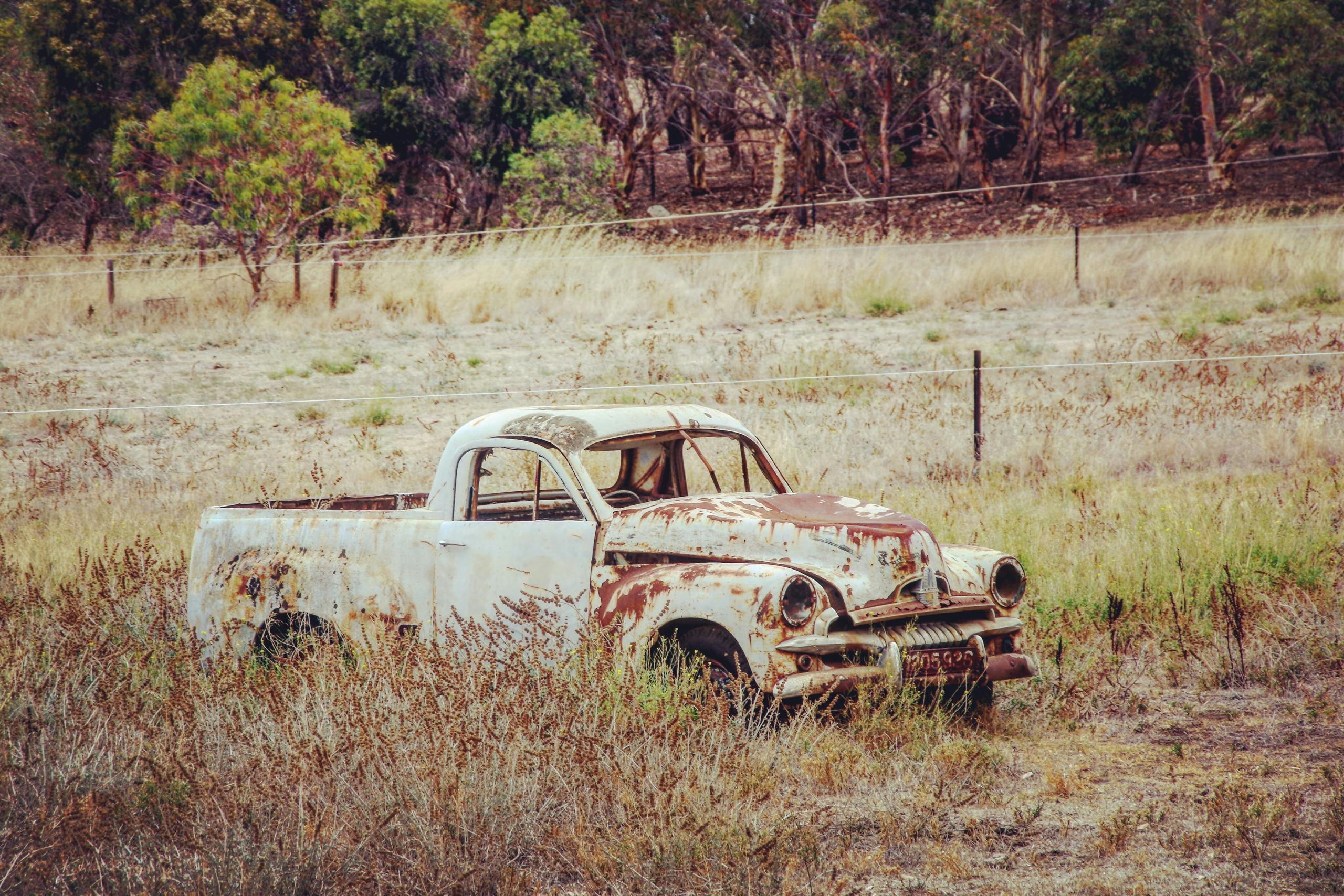Media | Articles
Australia’s inimitable Utes have a rich history, and the flame is still burning
The sale of the last (and fastest) Holden HSV Maloo GTSR W1 Ute at auction in January for $1,128,750 ($855,655 U.S.), coupled with GM’s total abandonment of the sixth-largest unfrozen continent in the world, drove home a poignant nail in Holden’s coffin. The long-awaited end Down Under surely came with a sour feelings, especially since GM President Mark Reuss went to bat to save Holden four times in the past 10 years and served as chairman of the company in 2008–09.
For Australians, the iconic Maloo Ute is important as the Chevrolet Corvette is to Americans or the Jaguar E-Type is to Brits. With the end Australian domestic productions still fresh, we thought the country’s glorious Ute culture could use some attention.
The HSV (Holden Special Vehicles) Maloo GTSR W1 is the modern halo of the SS Ute family, positioned above the GTS and GTSR. Powered by a supercharged 635-horsepower, 6.2-liter LS9 V-8 with a six-speed manual gearbox, the W1 is capable of an 11-second quarter mile, with a top speed around 175 mph. “Nah mate, THIS is a Ute!” as Mick Dundee would say.
Like the Ford FPV GT Cobra Ute R Spec, the Holden’s Maloo is a two-door with a bed in the style of a Chevrolet El Camino or Ford Ranchero—if either of those American classics had been offered as an L88 package or with a Ford 427 cubic-inch side-oiler. Finished in 1970-style Light My Fire Gold, the W1 Ute that sold earlier this year was one of four special orders built as GM wound up Holden’s domestic production in 2017. HSV built 255 GTS Maloo Utes, 606 GTSR Maloo Utes, and 298 of the hero GTSR W1-level Commodores in various body styles. This Maloo represents a tiny percentage of W1 production and indicates 685 kilometers (426 miles) from new. Hopefully it will still be driven.

Australia’s mighty Ute legacy
HSV started modifying Holden Commodore models in 1987, but the first Maloo (“Thunder” in an Aboriginal dialect) Ute was sold in 1992, featuring a 300-hp V-8, five-speed gearbox, and wild colors. In all, 90,000 HSV Commodore models were built up until December 2017, from VN through VX series. Workhorse Utes occupied about nine percent of the Australian market annually—roughly 70,000 vehicles in 2008, for example—with Holden and Ford splitting about half of that and Japanese pickups accounting for the other 50 percent.
Marketplace
Buy and sell classics with confidence
Were it not for the economic crash of 2008, Bob Lutz planned to sell a Pontiac Ute in the U.S. as the ST (Sport Truck). The Holden Monaro coupe had been imported in 2004–06 as a new GTO—minus any styling cues associated with the model. The Sport Truck doubled down on that mistake, 20 years after the last El Camino wheezed off the line. Australians were peeved that the U.S. wouldn’t get their halo model and even a V-6 was contemplated.
Back to Australia and the origins of the so-called Coupe Utility. Roadster pickups originated with the Model T Ford, and Ford built Model Ts and Model As in Geelong, Victoria, from 1925. But Australia is a dusty place, and in 1934, a farmer’s wife (as the legend goes) requested a metal top and windup windows so she could go to church on Sunday—and the sheep to market the next day. About that point, U.S. and Australian offerings diverged. U.S. pickups grew larger and more distinctly truckish, while Australian Utes were derived from car designs.
Holden began as a saddlemaker in 1856 and entered the automotive market in 1908. It became part of GM in 1931 and was Ford’s principal competitor, first with adapted American designs, then with Australian originals from 1948, including Utes. British manufacturers also included Coupe Utilities for the Australian market and these were offered into the 1960s alongside domestic GM, Ford, and Chrysler models. Compact Japanese pickups joined the fray in the late 1960s and gradually took more of the market—especially the crew-cab configuration, which is now common in full-size U.S. trucks.

GM/Holden, Ford, and Chrysler battled for the Australian market until the Japanese arrived, with compact American designs like the 1960 Ford Falcon and Chrysler Valiant. In general, Australian styling aped Big Three designs from other countries, like German Opels or Fords or British designs, which would eventually be combined into BMC. Utes were usually on longer station wagon chassis with an open bed and what the U.S. would call a Fleetside body.

With the exception of the very first Australian Holden 48-215 sedan of 1948 (actually an unbuilt U.S. Buick design from WWII), 1950s and ’60s Big Three Utes are recognizable pickup versions of the contemporary U.S. sedans. British-built Utes were based on smaller models, including the 1938–60 Ford Anglia, 1953–62 Ford Consul and Zephyr, 1951–60 Standard Vanguard, 1951–57 Vauxhall Wyvern and Velox, 1955–59 Austin A30, A35, and A50 and even 1949–54 Armstrong Siddeley Whitley.
Australian Utes were designed to deal with great distances and bad roads. The contrast was never more obvious than when the Ford Falcon was introduced to Australia in 1960. The downsized Ranchero seemed perfect for a country that prized good mileage as well as durability.

Ford sent several executives down to its You Yangs proving grounds outside Melbourne, and the plan was to run a half-dozen Falcons 24/7 for a week, starting on a Monday. The final Falcon broke on Thursday, and it was back to the drawing board. Australian Falcons would be several hundred pounds heavier with beefed-up frame and suspension.
Australia also had draconian laws about left-hand drive cars and mandated large warning signs be worn on their backs. Many businesses made full-time work out of right-hand-drive conversions of American cars. LHD vehicles are excused today if they are older than 30 years, but they need turn signals, as hand signals are impossible without a passenger.
Since Utes led very hard lives—think about dropping the sort of heavy things box-bed pickups absorb and then how an El Camino would fare—clean survivors are tough to come by. On top of that, after the Holden 48-215 appeared, Australian cars began to feature unique designs, which limits many spare parts to Australia.
In that regard, the Maloo may have an advantage for an American buyer. The U.S. federal 25-year rule means Utes with production dates from 1996 and older can be imported. They wouldn’t be cheap, but as racer/writer Thor Thorson says, “Collectible then, collectible now,” and the high-performance HSV models have unmistakable cachet.
Buying an Aussie Ute
Having bought an Aussie Ute, I can offer some useful tips (and a few caveats).
First off: Nobody will know what it is when you show it off. The very fact it’s RHD will scare off buyers when you decide to let it go—for reasons we will get to.

Make sure you deal with an experienced importer; there’s a lot of paperwork to take care of, and the average DMV worker is inclined to go to lunch when you appear (in my case two, simultaneously—the third merely skipped my number). Remember there is a 25-year limit on importation.
Buy a car that’s already been imported, or have your Australian broker perform a detailed pre-purchase inspection Down Under and send photos. The good news is the Australian dollar is worth around 77 U.S. cents. Plan on shipping to add around $1500 U.S.

Be aware that not all of Australia is semi-arid. Eighty percent of Australians live within 100 miles of the sea, and all principal cities are estuarial. Australian rustproofing is about as good as U.K. protection was in the 1950s.
Make sure the car is complete, because you’ll need a lot of good luck finding spares in North America. I had to get an oil pressure sender from a friend in Perth (the U.S. does not use parallel thread). The switch cost about $1.99—the shipping was $12.99. I suspect that proportion is fairly constant. Be aware that your Ute may be a Ford, but NOTHING from Australia is the same as a U.S. model (with the possible exception of an early 1960s Falcon, and why would you bother?)
That means problems getting body panels, lights, window glass, electrical items, and mechanical parts. Replacing a windshield could be very expensive. Australian cars share almost no parts with other countries, except maybe South Africa. To be specific: My 1988 Ford Falcon XF had an Oz-only engine, which was basically a 150-hp, 4.0-liter, OHV, six-cylinder “Kent” engine with an alloy cross-flow head designed by Honda. Mine was carbureted, but fuel injection was available later.

My Ute also had special “six-pack” 14-inch wheels, which looked like 1969 Mustang wheels, but the rear rims were wider. It had power steering, power brakes (discs up front), working R134 air conditioning, and a radio that wouldn’t receive a single station (too far away, I suppose). The white paint was excellent, the body was laser straight, glass good, interior just about perfect.
Fortunately, the bane of El Camino ownership was resolved. The panel which covers the original rear footwell in the Chevrolet station wagon platform flexes, and water leaks into the well behind the front seats. In Australian Fords, that rear panel is sealed off from the cabin. The 20-gallon fuel tank is on one side and an additional tank can be fitted to the other side too. Weirdly, the Falcon’s trailer hitch slid in behind the rear license plate. There was no rear bumper, and the tailgate could NOT be lowered with the hitch in place.

The Ute ran well and was completely drivable, except it was like driving a car made of glass. You couldn’t afford a parking lot crunch. Eventually I decided I was living on borrowed time and contacted my classic car broker friend Dave Charvet, who deals with real cars like Packards and such but has a soft spot for my “funnies,” as they used to call ingenious British weapons in WWII.
“We need to find a homesick Australian, or I married this thing,” I told Dave. “I have about $7500 in it, so let’s ask that.” About three weeks later, Dave called me back. “I found you a homesick Australian,” he said. “His name is Tas, and he’s working on the oil pipeline in Jamestown, North Dakota. He says it’s going to cost $1000 to ship it there, can you help?”
“Help?” I said. “Hell, I’ll pay it!” So I did. The Ute cost me $6500. I put tires on it and a few other odds and ends, and I got $6500 back.

There is some good news, for those of us who believe in saving orphans. Tas wrote to me about two weeks later after he got it and was thrilled with the car (how often does that happen?). He said he had a long winter ahead and planned a frame-up Aussie-style restomod. He rebuilt the engine and added fuel injection, bucket seats, and a console, trick Aussie wheels, and terrific paint job with a bed cap and a wing. Soon after he finished, Tas moved to Sacramento—definitely more of a car culture hub.
“Nobody knew what it was in Jamestown,” he told me. “Now I get stopped all the time.”





















I know the frustration of trying register an Australian ute in the USA. I imported a 1955 Ford Mainline Ute to California no one at the DMV office would believe me that it was a real Ford, not a highly modified one. I was actually walking out of the DMV in frustration when I heard a DMV worker who had just come back from lunch yell to his colleagues… “hey, you guys should go see that Aussie Ute in the parking lot!” That got me my registration.